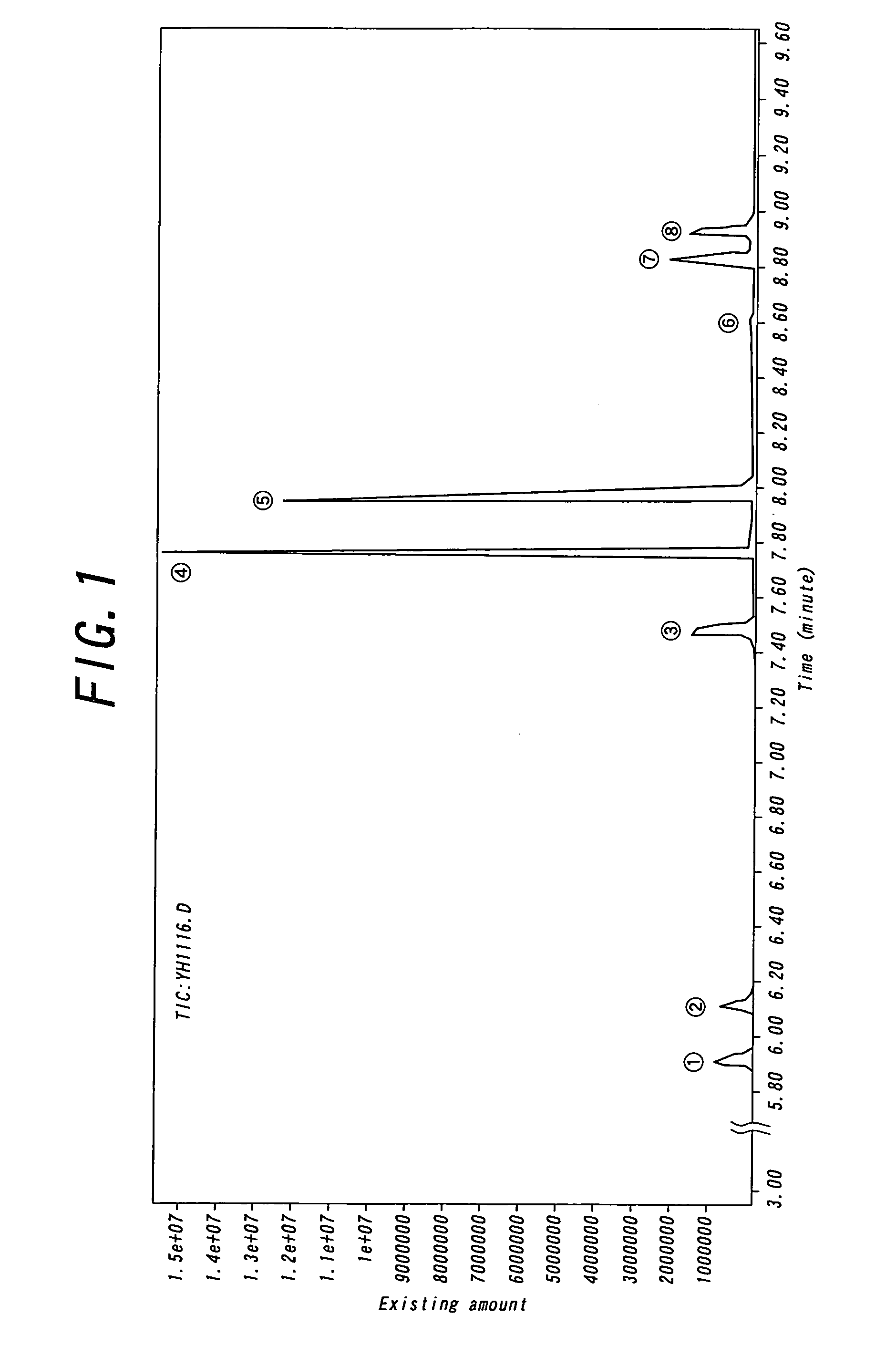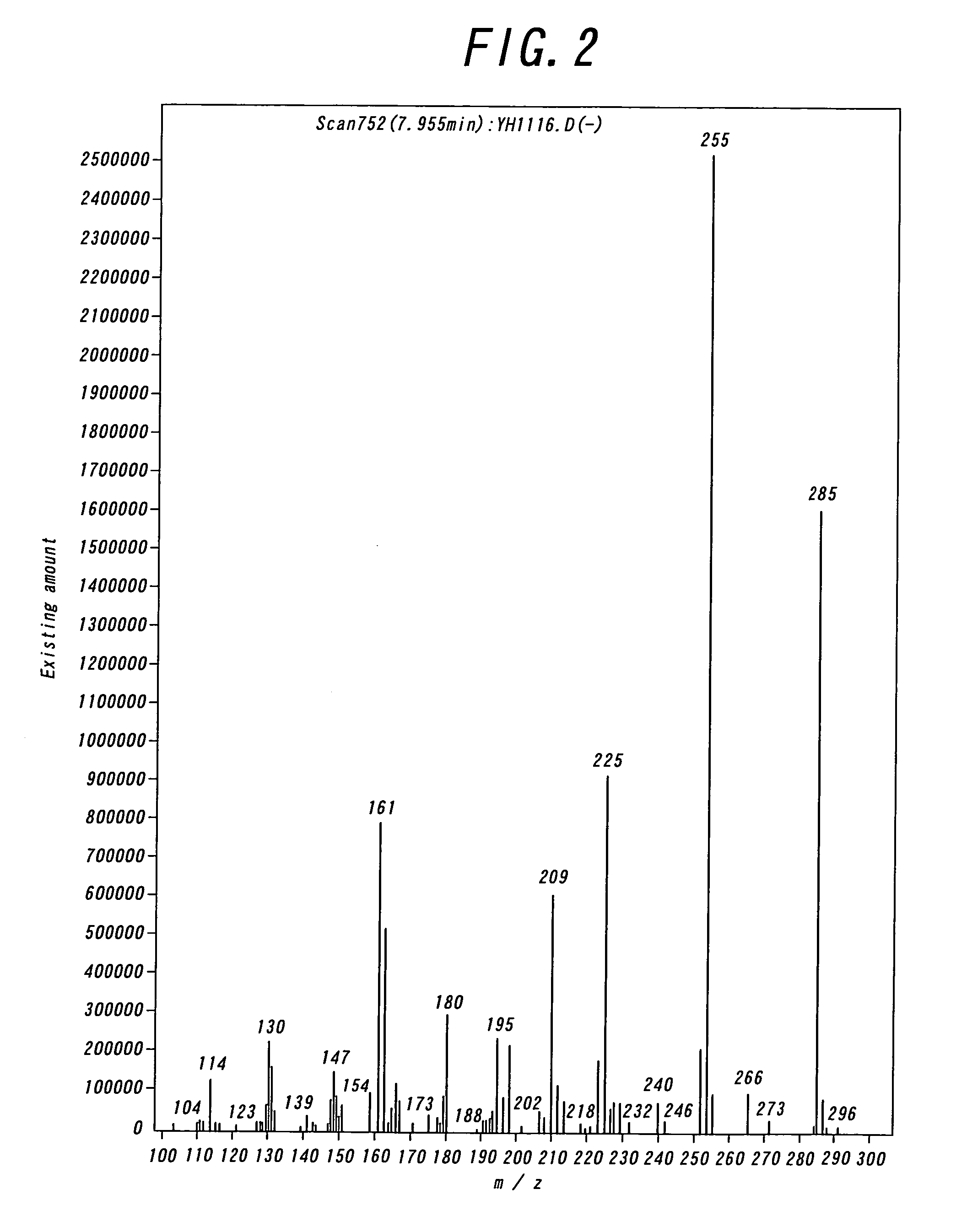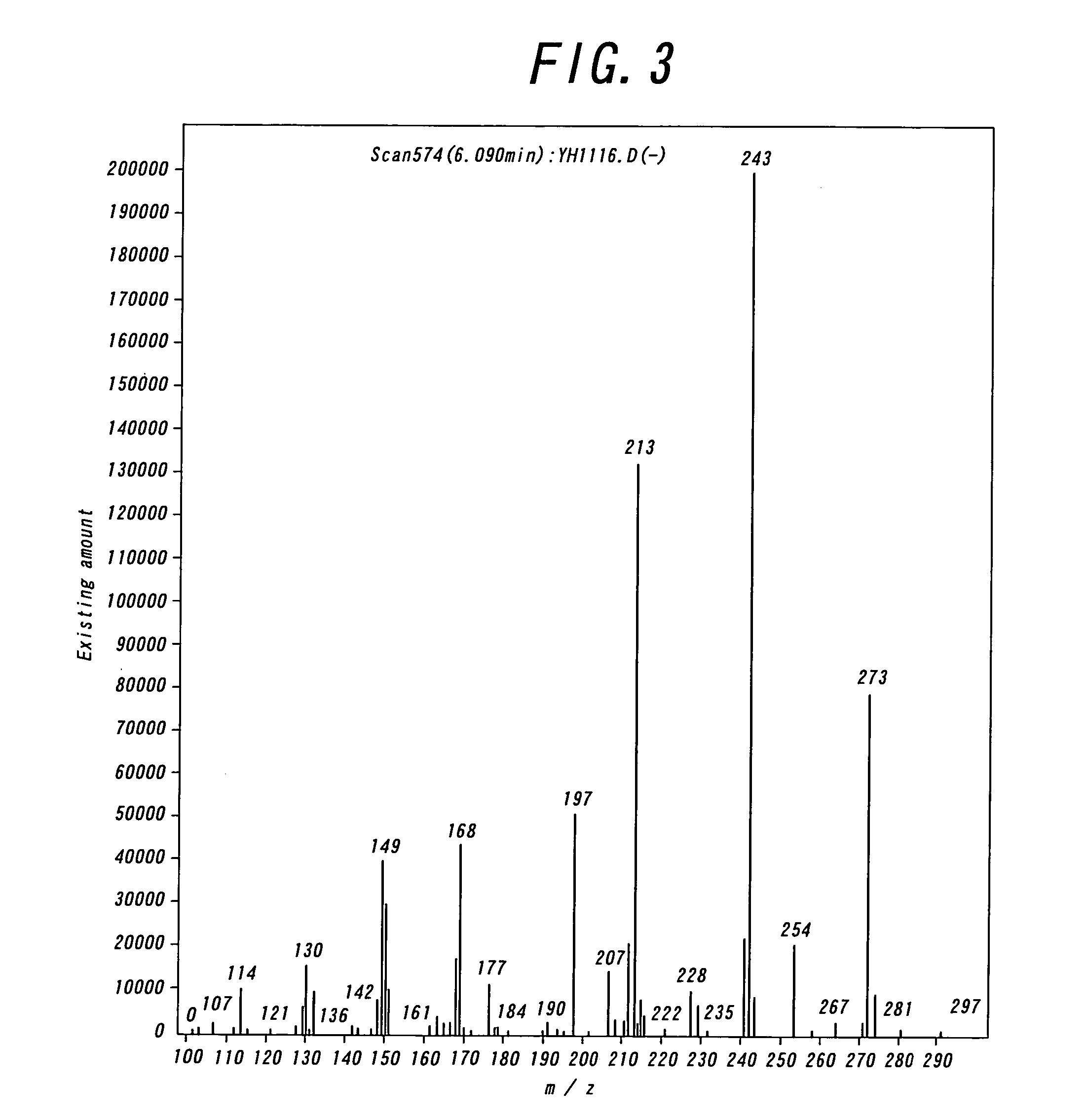Non-aqueous electrolyte cell, electrolyte stabilizing agent, and phosphazene derivative and method for preparation thereof
a technology of phosphazene and electrolyte, which is applied in the field of non-aqueous electrolyte cells, electrolyte stabilizing agents, and phosphazene derivatives and methods for preparation thereof, and can solve the problems of high ignition and the like, high risk of hydrogen generation by reacting the material of the negative electrode with water, and solvent vaporization or decomposition
- Summary
- Abstract
- Description
- Claims
- Application Information
AI Technical Summary
Benefits of technology
Problems solved by technology
Method used
Image
Examples
example 1
—Preparation of Non-aqueous Electrolyte—
[0184]To 47.5 ml of a mixed solvent of diethyl carbonate and ethylene carbonate (mixing ratio (volume ratio): diethyl carbonate / ethylene carbonate=1 / 1)(aprotic organic solvent) is added 2.5 ml (5% by volume) of a phosphazene derivative (cyclic EO / F type phosphazene derivative (ratio (EO / F) of ethoxy group (EO) to fluorine (F) in all R4s at n=3 in the formula (2)=2 / 4) and further LiPF6 (support salt) is dissolved in a concentration of 0.75 mol / kg to prepare a non-aqueous electrolyte.
[0185]With respect to the thus obtained non-aqueous electrolyte, the evaluation of the self-extinguishing property, fire retardant property and non-combustibility is carried out in the same manner as in the aforementioned “evaluation method of self-extinguishing property, fire retardant property and non-combustibility”. Concretely, a case that no ignition is caused by adding a test flame or a test piece is not ignited by the test flame (combustion length: 0 mm) is e...
example 2
—Preparation of Electrolyte—
[0193]To 99.5 ml of a mixed solvent of diethyl carbonate and ethylene carbonate (mixing ratio (volume ratio): diethyl carbonate / ethylene carbonate=1 / 1)(aprotic organic solvent) is added 0.5 ml (0.5% by volume) of a phosphazene derivative (cyclic phosphazene derivative; compound of the formula (2) in which n=3, one of six R4s is —O—CH2—CH═CH2 group and the remaining five are fluorine) (electrode stabilizing agent) and further LiPF6 (support salt) is dissolved in a concentration of 0.75 mol / kg to prepare an electrolyte (non-aqueous electrolyte). With respect to the thus obtained electrolyte is carried out the aforementioned evaluation of “self-extinguishing property, fire retardant property and non-combustibility”. The results are shown in Table 2.
[0194]With respect to the obtained non-aqueous electrolyte, the moisture content (ppm), hydrogen fluoride concentration (ppm) and discharge-recharge capacity (mAh / g) just after the preparation of the non-aqueous e...
example 3
[0199]An electrolyte is prepared in the same manner as in Example 2 except that the addition amount of the phosphazene derivative used in “Preparation of electrolyte” of Example 2 is changed to 30% by volume, and each evaluation is conducted thereto. Also, a cell is prepared in the same manner as in Example 2 and each evaluation is conducted. The results are shown in Table 2.
PUM
| Property | Measurement | Unit |
|---|---|---|
| viscosity | aaaaa | aaaaa |
| boiling point | aaaaa | aaaaa |
| melting point | aaaaa | aaaaa |
Abstract
Description
Claims
Application Information
 Login to View More
Login to View More - R&D
- Intellectual Property
- Life Sciences
- Materials
- Tech Scout
- Unparalleled Data Quality
- Higher Quality Content
- 60% Fewer Hallucinations
Browse by: Latest US Patents, China's latest patents, Technical Efficacy Thesaurus, Application Domain, Technology Topic, Popular Technical Reports.
© 2025 PatSnap. All rights reserved.Legal|Privacy policy|Modern Slavery Act Transparency Statement|Sitemap|About US| Contact US: help@patsnap.com



